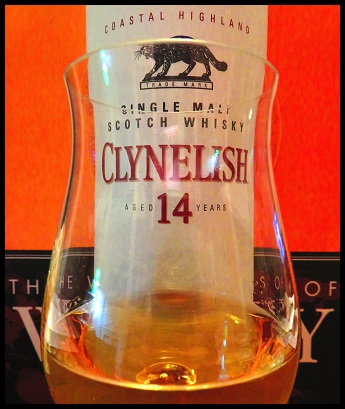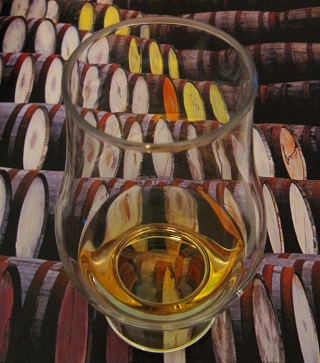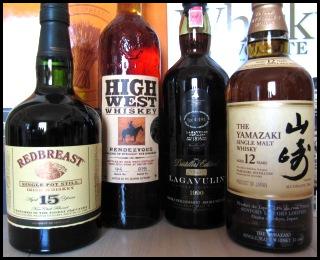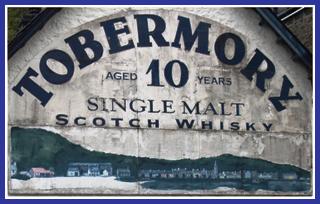Advertisement

That special festive time of the year is fast approaching. And we’re all familiar with the old adage, “It’s better to give than to receive.” But when it comes to bringing smiles to the faces of the whisky (and whiskey) lovers in one’s life, choosing gifts can present a real challenge. I’d like to step up to the plate and propose a few suggestions.
Whiskies
Everyone’s taste buds are different. There’s simply no way around this truth. So rather than take a ‘one bottle fits all’ approach, I’m recommending five flavourful whiskies, each one of which has something unique to offer.
Balblair 2003: Despite dating back to 1790, this northern Highland malt Scotch distillery has really only come into its own over the last few years. And the 2003 vintage, though youngish, still hits all the right sensory targets. Its honeyed sweetness is handily balanced by refreshing spring meadow and citrus notes, while an oak-driven spiciness surges forth on the finish. Even better, the spirit does not suffer the vagaries of chill filtration or artificial colouring prior to being bottled at a sage 46% alcohol by volume. Pure and perfect as it pours, this one will please a wide variety of palates.

Clynelish Distillery is located in the northern Highlands of Scotland, a stone’s throw from the coastal village of Brora and the A9 highway. It is owned by the giant drinks firm Diageo.
The history of Clynelish is replete with stark contrasts – power and disenfranchisement, prosperity and poverty, and new versus old. In many ways, the distillery’s saga mirrors Scotland’s last two hundred years. Above all, it recounts the birth and evolution of a little-known but essential malt whisky site.
A person time-traveling back to early 19th-Century Sutherlandshire would encounter a land similar to many contemporary, autocratic Third World nations – a place where the welfare of commoners fell beneath the footsteps of the fortunate.
Monday November 2, 2015

This time around, I’m passing right by the mass of many excellent standard-strength malt Scotch whiskies available in the marketplace, and heading directly for a few exceptional, straight-from-the-cask (or as close to it as makes no difference) ‘beasties’.
It’s perhaps not surprising that six of the malts profiled here emanate from the Isle of Islay, which is not exactly known for holding back when it comes to the intense style of its whiskies. Add one more from the Isle of Skye and another from the Highlands, and we’re ready to dive into eight truly exciting drams.
Be forewarned, however. While these Scotches will fill every corner of your palate and bring considerable warmth in the process, some may also lighten your finances a tad. But never mind that. Bite the bullet and sip the nectar!
 October 10th, 2016
October 10th, 2016
Lagavulin. If ever a name evoked a whisky’s character. Let’s face it. The English translation of the original Gaelic Lag a’mhuilinn, ‘hollow by the mill’, simply doesn’t do justice to the distillery or its spirit. But Lagavulin... That sounds like a breath of magic!
The Lagavulin Distillery occupies a picturesque site located in the prime distilling area on the southeastern coast of the Isle of Islay in Scotland, opposite the crumbling ruins of Dunyvaig Castle. It (along with the Caol Ila Distillery and a large industrial malting facility at Port Ellen, both also on Islay) is owned and operated by Diageo, the largest spirits producing firm in the world.

June 8, 2015
There was a time, during the 20th Century, when it seemed as if Ireland’s whiskey was ‘down for the ten count’. The Irish spirit’s major competitor, the Scotch whisky industry, had not only better managed to weather two World Wars, American Prohibition, distillery closures and brutal rationalization. It had also been bold enough to purchase and then shut down (through the huge Distillers Company Limited) a number of Irish grain distilling sites. Gone were the ‘glory days’ of the 1800s, when Irish whiskey had maintained a reputation for high quality and large-scale production.
 In this edition of A Rich Pour, Cigar Weekly Managing Editor Doug Kuebler (jazznut) delves into the history and liquid bounty of Scotland’s easternmost malt whisky distillery.
In this edition of A Rich Pour, Cigar Weekly Managing Editor Doug Kuebler (jazznut) delves into the history and liquid bounty of Scotland’s easternmost malt whisky distillery.September 12th, 2016
A whimsical hodge-podge of granite-stoned structures stands amidst the rich farmland of Aberdeenshire, near Percock Hill. Two tall-necked pagodas rise from the compound’s central area – a sure indication that whisky business is taking place inside. This is Glengarioch (Gaelic for ‘valley of the rough ground’, and pronounced ‘Glen-geery’), one of the few Highland distilleries able to trace its roots all the way back to the 18th Century.

May 4, 2015
The road to and through whisky (or whiskey, which is how most Irish and American distillers prefer to spell the word) is a voyage of discovery. For many, the journey never ends. Still, that first encounter with the ‘water of life’ can easily turn into an intimidating one – especially if prior experiences with alcoholic beverages have been limited to shooters, coolers and cocktails. As the late Michael Jackson, perhaps the preeminent beer and whisky writer of his time, once stated, “Some spirits are timorous, others feel the need for disguise, but whisky is bold and proud… It is not suitable for people who are afraid of their own shadow.” If you’re about to hit the whisky road, let me help you make that initial encounter the first of many pleasurable ones.
Most Scotch drinkers are aware of the exalted position single malts occupy within the hierarchy of Scotland’s spirits. And many may know of the important role grain whiskies play in blended Scotches. But what of the grain whiskies themselves? Is there yet another realm of spirituous delights flying under the radar? The short answer is, “Yes.”

PUBLISHER’S NOTE: This article was originally published January 26, 2009 in the Cigar Weekly Magazine. It has been revised and updated.
One of the positive legacies of the period from Prohibition to the present day has to be the fascination of Americans and Canadians with each other’s whiskies. Canadian Club and Crown Royal owe much of their success to an incredibly receptive drinking clientele in the United States, its desires rooted in an era of efficacious smuggling channels and speakeasies. And although the Canadian market for Bourbon may not match its more southerly counterpart, countless measures of the American spirit have still been served in homes and watering holes from Vancouver to Saint John’s to White Horse, never mind occasionally incorporated into domestic liquors. The cachet of a beverage made elsewhere seems destined to please eager palates and blenders alike.

Yes… There are people who appreciate a good malt but just can’t get their taste buds around drams of Lagavulin or Laphroaig!
Fortunately, when it comes to meeting this challenge, there’s true ‘gold’ to be had. Let me guide you to a small number of distilleries, provide you with a few (hopefully) interesting facts about them, and profile some of their whiskies. These Scotches are sure to please. And, with one exception, they won't bust the bank.
Time to read on, and taste!

March 16, 2015
The Isle of Mull lies off the western coast of the Scottish mainland, midway between its fellow Inner Hebridean islands of Jura and Islay to the south, and Skye to the north.
Although a commercial seaplane service provides direct flights from Glasgow to Mull, most visitors and locals avail themselves of the ferries operated by Caledonian MacBrayne.